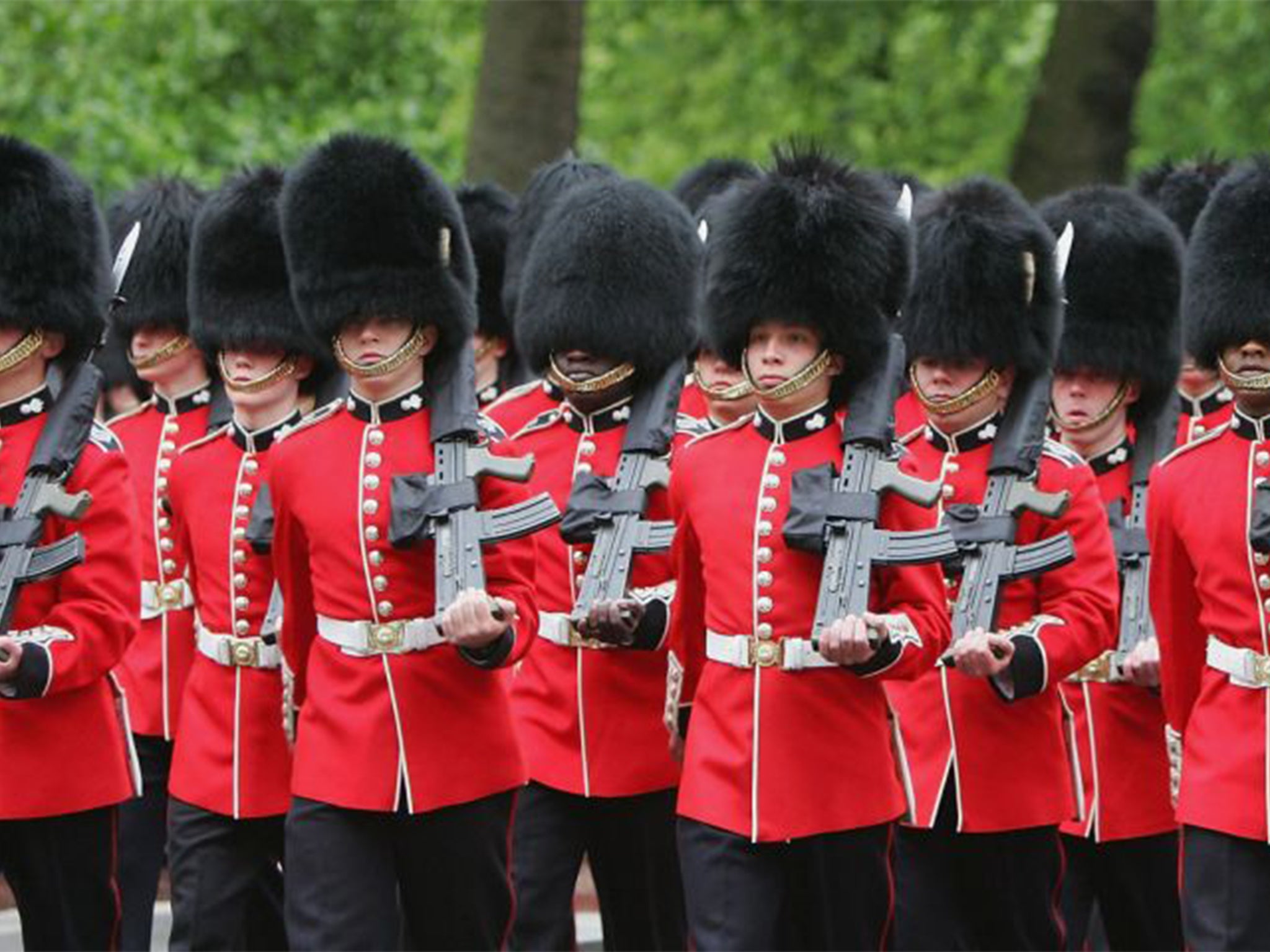MoD attacked by animal rights campaigners over use of bearskins
FoI data reveals defence officials ordered 127 of the caps last year, all made using real fur from Canadian black bears

Your support helps us to tell the story
From reproductive rights to climate change to Big Tech, The Independent is on the ground when the story is developing. Whether it's investigating the financials of Elon Musk's pro-Trump PAC or producing our latest documentary, 'The A Word', which shines a light on the American women fighting for reproductive rights, we know how important it is to parse out the facts from the messaging.
At such a critical moment in US history, we need reporters on the ground. Your donation allows us to keep sending journalists to speak to both sides of the story.
The Independent is trusted by Americans across the entire political spectrum. And unlike many other quality news outlets, we choose not to lock Americans out of our reporting and analysis with paywalls. We believe quality journalism should be available to everyone, paid for by those who can afford it.
Your support makes all the difference.The Ministry of Defence has come under attack from animal rights campaigners for continuing to use bearskins for the ceremonial headgear worn by Buckingham Palace guardsmen.
A total of 127 bearskins were ordered by defence officials last year alone, according to data released under the Freedom of Information Act.
Using real fur, from black bears killed in Canada, to make the 18in-tall headgear is so controversial that the MoD refuses to state who it buys them from. “If the names of the suppliers were released into the public domain employees of those suppliers could be at risk of verbal abuse or physical harm,” stated the response, released last week.
Bearskins have been worn by British soldiers for 200 years, to symbolise the victory over Napoleon’s bearskin-wearing Imperial Guard at the battle of Waterloo in 1815. They are worn by the Grenadier Guards, Coldstream Guards, Scots Guards, Irish Guards, and Welsh Guards.
Designers such as Stella McCartney and Vivienne Westwood are among those who have offered their services to the MoD in recent years to design alternative hats that do not need real fur.
For each one of the 127 caps purchased, a bear was cruelly killed, either by being shot during a hunt or ensnared, possibly for days, in a painful trap
But defence staff say that a suitable alternative to real fur has yet to be found. “Over the last 20 years there have been a number of trials of synthetic alternatives to bear pelts which have, to date, proved unsuccessful as nothing has matched the properties of the natural product,” claimed MoD officials. “The Ministry of Defence does not buy bear pelts – only ceremonial caps,” they added.
However, a spokesman for People for the Ethical Treatment of Animals (Peta) said: “It is inexcusable that the same army which is capable of building some of the most sophisticated equipment and machinery in the world claims it is unable to find a synthetic replacement for bearskins despite the availability of luxurious synthetic materials.
“The fact is that the Ministry of Defence spends tens of thousands of pounds each year supporting the fur industry while doing absolutely nothing to further the search for synthetic materials.”
He added: “For each one of the 127 caps purchased, a bear was cruelly killed, either by being shot during a hunt or ensnared, possibly for days, in a painful trap. During hunts, as many as one bear in seven is not killed immediately after being shot, and some escape wounded, dying later from blood loss or starvation. In the case of mothers with nursing cubs, it can mean the slaughter of entire families.”
The MoD defended its policy of using real fur, with officials stating: “Pelts are sourced from Canada and come from animals culled as part of a programme to manage the wild population licensed by the Canadian government. No bear is ever hunted to order.” It added: “And the Ministry of Defence suppliers only have access to stock made available by the Canadian authorities following a cull.”
But the Peta spokesman said: “It’s high time these ghastly regalia were brought into the 21st century, just as has been done with the drum major’s apron, the Royal Air Force band’s busby, the Royal Horse Artillery’s busby and the shako hats worn by the rifle regiments, all of which have been modernised with synthetic materials.”
Subscribe to Independent Premium to bookmark this article
Want to bookmark your favourite articles and stories to read or reference later? Start your Independent Premium subscription today.
Join our commenting forum
Join thought-provoking conversations, follow other Independent readers and see their replies
Comments